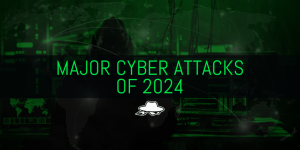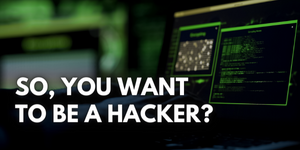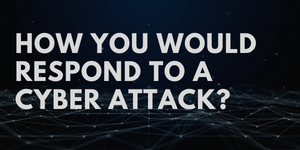Understanding PTaaS and SOC

Reading Time: 5 Minutes
Introduction
In an age where society’s dependence on technology has reached unprecedented levels, the domain of modern security presents itself as an ongoing challenge, where defenders are engaged in a persistent battle against cyber adversaries. The number of cyber attacks has grown significantly over the past few years and Cybercriminals are using increasingly sophisticated mechanisms to penetrate defenses. Each organization should find effective ways to secure its infrastructure.
The field of IT security facing overwhelming challenges—ranging from ransomware and sophisticated phishing tactics to direct attacks on critical infrastructure, intellectual property theft, and breaches facilitated by vulnerable supply chain partners. The danger extends beyond external forces, with insiders capable of posing significant threats through malicious actions. Also, they must anticipate risks related to cloud computing, remote work, mobile devices, and other innovations.
CIOs and CISOs are under pressure to invest wisely to defend their organizations. The Cybersecurity landscape is full of solutions provided by multiple vendors when they offer their ‘secure’ solutions, each promising impenetrable protection against the relentless tide of threats. Yet, despite the wealth of products and solutions, breaches continue to make headlines, and organizations often find themselves asking, “Why?”. The answer, we argue, lies in understanding why the Offensive Security perspective can help you protect your infrastructure, which extends beyond the mere implementation of defensive measures only.
The latest hype surrounding security solutions is SOC (Security Operations Center) for any organization that needs to implement a plan for its defense strategy in order to prevent cyber-attacks. But that’s not a complete solution. It’s about actively seeking and exploiting vulnerabilities before adversaries can and that’s where PTaaS (Penetration Testing As a Service) comes in.
In this article we will discuss the differences between PTaaS and SOC by comparing them and which one can be the more effective overall solution for organizations to protect their assets.
What is a SOC?
A security operations center, or SOC, is a team of IT security professionals that protects the organization by monitoring, detecting, analyzing, and investigating cyber threats. Networks, servers, computers, endpoint devices, operating systems, applications, and databases are continuously examined for signs of a cyber security incident. The SOC team analyzes feeds, establishes rules, identifies exceptions, enhances responses, and keeps a lookout for new vulnerabilities.
Given that technology systems in modern organizations run 24/7, SOCs usually function around the clock in shifts to ensure a rapid response to any emerging threats.
How does a SOC work?
The primary mission of the SOC is security monitoring and alerting. This includes the collection and analysis of data to identify suspicious activity and improve the organization’s security. Threat data is collected from firewalls, intrusion detection systems, intrusion prevention systems, security information and event management (SIEM) systems, and threat intel. Alerts are sent out to SOC team members as soon as discrepancies, abnormal trends, or other indicators of compromise are picked up.
Pros of using SOC
SOC provides numerous benefits including the following:
- Continuous monitoring and analysis of system activity.
- Improved incident response.
- Decreased timeline between when a compromise occurs and when it is detected.
- Reduced downtime.
- Centralization of hardware and software assets leads to a more holistic, real-time approach to infrastructure security.
- A clear chain of control for systems and data is something that’s crucial for the successful prosecution of cybercriminals.
Challenges/Cons
Talent gap and Sophisticated attackers:
Network defense is a key component of an organization’s cyber security strategy. It needs special attention since sophisticated actors have the tools and know-how required to evade traditional defenses such as firewalls and endpoint security.
Organizations must take proactive steps to bolster their SOC teams’ capabilities. One approach is to invest in upskilling existing employees, providing them with the technical knowledge and expertise needed to effectively combat cyber threats. They must recognize the value of cybersecurity expertise and be willing to compensate professionals accordingly. Paying competitive salaries ensures that SOC teams attract and retain top talent, rather than relying on the lowest-cost resources available. By investing in skilled professionals and empowering team members with the skills necessary to fill critical roles within the SOC, organizations can strengthen their cybersecurity posture and better defend against the sophisticated threats they face.
Alert Fatigue:
In many security systems, anomalies occur with some regularity. If the SOC relies on unfiltered anomaly alerts, it’s easy for the sheer volume of alerts to be overwhelming. Many alerts may fail to provide the context and intelligence needed to investigate thus distracting teams from real problems. For example, lack of true filtration from alerts of vulnerabilities that are false positives, and minimalistic impact creating more work and pressure on the defensive team and failing to look for more critical and exploitable vulnerabilities that exist because of the lack of correct approach on relying on automated tools.
Unknown Threats:
Conventional signature-based detection, endpoint detection, and firewalls cannot identify an unknown threat. For example, Zero Day Attacks – It’s called a zero-day for a reason, this means it will still exist to any vendor, and someone will be always a victim until it’s patched, and if it’s patched by everyone.
Security tool overload:
In their effort to catch every possible threat, many organizations procure multiple security tools. These tools are often disconnected from each other, have a limited scope, and do not have the sophistication to identify complex threats.
See Also: Solutions: Web Application Pentesting
What is PTaaS (Penetration Testing as a Service)
(PTaaS) is the modern model of pentesting which provides continuous or recurring penetration testing assessments, allowing organizations to assess their security posture regularly or even after each code change or based on their evolving security requirements. It enables organizations to stay on top of new exploits by remediating vulnerabilities constantly and mitigating major risks and issues.
How PTaaS works?
PTaaS is designed to be a subscription-based service. It provides comprehensive dashboards that encompass pertinent data throughout the entire testing process—from the pre-test phase, during the test, and post-test analysis. Parallel to conventional penetration testing services, PTaaS providers furnish valuable resources for assessing vulnerabilities and validating the efficacy of remediation efforts.
Benefits of PTaaS
Harnessing Hacker-Approach Assessment:
PTaaS goes beyond traditional vulnerability scanning by conducting in-depth assessments that mimic the tactics, techniques, and procedures (TTPs) employed by actual Hackers. This comprehensive approach provides a more thorough evaluation of security defenses. It enables organizations to learn how a threat actor perceives their current security posture and how existing security measures handle a real-life cyber attack.
Early Feedback on Code Changes:
PTaaS enables you to detect and remediate issues during the Software Development Life Cycle (SDLC) release cycle providing developers with a vulnerability alert before they push new code to live environments.
Fast Remediation Support and Centralized Reporting:
PTaaS platforms provide detailed remediation support, such as screenshots and videos, to assist organizations in locating and fixing vulnerabilities. This support saves significant time, eliminating the need to determine the issue and why it occurred. Also, it provides centralized dashboards and reporting, making it easier for administrators to access and analyze test results without the need for extensive data aggregation and consolidation.
Continuous monitoring, Proactive Vulnerability Identification and Risk Mitigation:
PTaaS takes a proactive approach to security by actively identifying vulnerabilities in systems, networks, and applications before malicious actors can exploit them. It initiates tests on demand, displaying the detected vulnerabilities as they are found and posted by the pentesters. This helps organizations stay ahead of potential threats.
Reduction of False Positives:
Penetration testing conducted through PTaaS helps reduce false positives, providing organizations with more accurate and actionable insights into their security vulnerabilities. This enables more effective prioritization of remediation efforts.
Key Differences between PTaaS and SOC:
Focus:
SOC: Focuses on continuous monitoring, incident detection, and response.
PTaaS: Focuses on actively testing and assessing security defenses through controlled simulated attacks.
Timing:
SOC: Operates continuously, providing real-time monitoring and response.
PTaaS: Conducted periodically or on-demand as a specific service to assess security posture.
Purpose:
SOC: Aims to maintain the overall security of the organization by detecting and responding to security incidents.
PTaaS: Aims to identify and address vulnerabilities proactively through simulated attacks to improve overall security posture.
Even when leveraging the vigilance of SOC Centers and the precision of PTaaS, it’s imperative to recognize inherent limitations. Certain elusive threats, particularly those utilizing zero-day vulnerabilities post-exploitation, cannot be stopped, in real time. This represents a persistent risk, one that invites ongoing enhancements and strategic considerations within cyber defense methodologies.
The Synergistic Force between Manual and Automation
Automated scanners are lauded for their efficiency in swiftly uncovering common vulnerabilities, ranging from outdated software to misconfigurations and known security flaws. Their ability to operate at scale and speed far surpasses human capabilities.
However, the true essence of human pen testers lies in their innate creativity, adeptness in complex vulnerability exploitation, and deep understanding of nuanced business contexts. They excel in devising novel attack vectors, orchestrating sophisticated social engineering simulations, and identifying intricate business logic flaws—areas where automated scanners often fall short.
It’s different when a tool finds a specific known vulnerability, but also different if an experienced red teamer exploits that vulnerability showcasing a true impact from theory to actual realistic skill required for that exploit proof of concept.
What is still lacking in SOC Solutions that possibly is NOT detected?
Remember that a SOC logs what the company gives it. Not only that but some things are not being monitored that will be left out for the SOC team to detect and respond to. For example, when it comes to the topic of real-time attacks happening. As we know there are various ways for them to take place. It could come internally as well, so how would detect something that is done without being detected, such as triggering sophisticated payloads that are tested against specific vendors that are known to be bypassed? But also, how would SOC prevent such types of attacks if they come from multiple sources? Detecting and preventing can be done for some but not all things, you cannot protect what you cannot see, and some of the things that are left out are:
- Sniffing – often companies do not monitor, log, and perform network analysis even with AI. An attacker can perform internal and post-exploitation techniques sniffing networks in real time while performing SSL stripping techniques on HSTS.
- Real-Time Browser-Based Attacks: A lot of systems would prevent sophisticated tools like the BeEF framework from taking place from within the network itself.
- Having a VPN is not enough – should an attacker compromise a machine that is connected to a company with a VPN, does not really matter. Post exploitation can be performed and real-time attacks as the client is connected to a VPN with a meterpreter shell or beacon, making it useless in certain cases.
Many more points can be discussed and proved here, however, these are some of them that we can share with you to highlight some weaknesses SOC centers can have.
Compliance
Security Operations Center (SOC) can contribute to achieving compliance with various regulatory requirements and industry standards. However, it’s essential to understand that SOC solutions alone may not be sufficient to ensure full compliance.
Many regulatory frameworks and industry standards require organizations to conduct regular penetration testing. PTaaS helps organizations meet compliance requirements by providing evidence of proactive security testing.
Conclusion
It’s imperative to underscore the sobering reality of cyber threats. The pervasive and insidious nature of cyber-attacks knows no bounds, infiltrating organizations of all sizes and industries with devastating consequences. From data breaches and financial losses to reputational damage and regulatory penalties, the repercussions of a successful cyber-attack can be profound and far-reaching.
Both Security Operations Centers (SOCs) and Penetration Testing as a Service (PTaaS) play vital roles in modern cybersecurity. SOCs excel in real-time monitoring and incident response, while PTaaS offers proactive identification and remediation of vulnerabilities. Combining the strengths of SOCs along with constant pentesting, is essential for organizations to effectively defend against evolving cyber threats. By integrating these approaches into a comprehensive cybersecurity strategy, organizations can enhance their resilience and better protect their assets, data, and reputation.
Are you looking for a better way to secure your business? Whether you need a product audit, vendor security assessment, or overall security testing, we can help. Our team of experts will work with you to identify your specific security needs and provide tailored recommendations to improve your overall security posture.
To find out more about how Black Hat Ethical Hacking can help you, check out our Solutions







